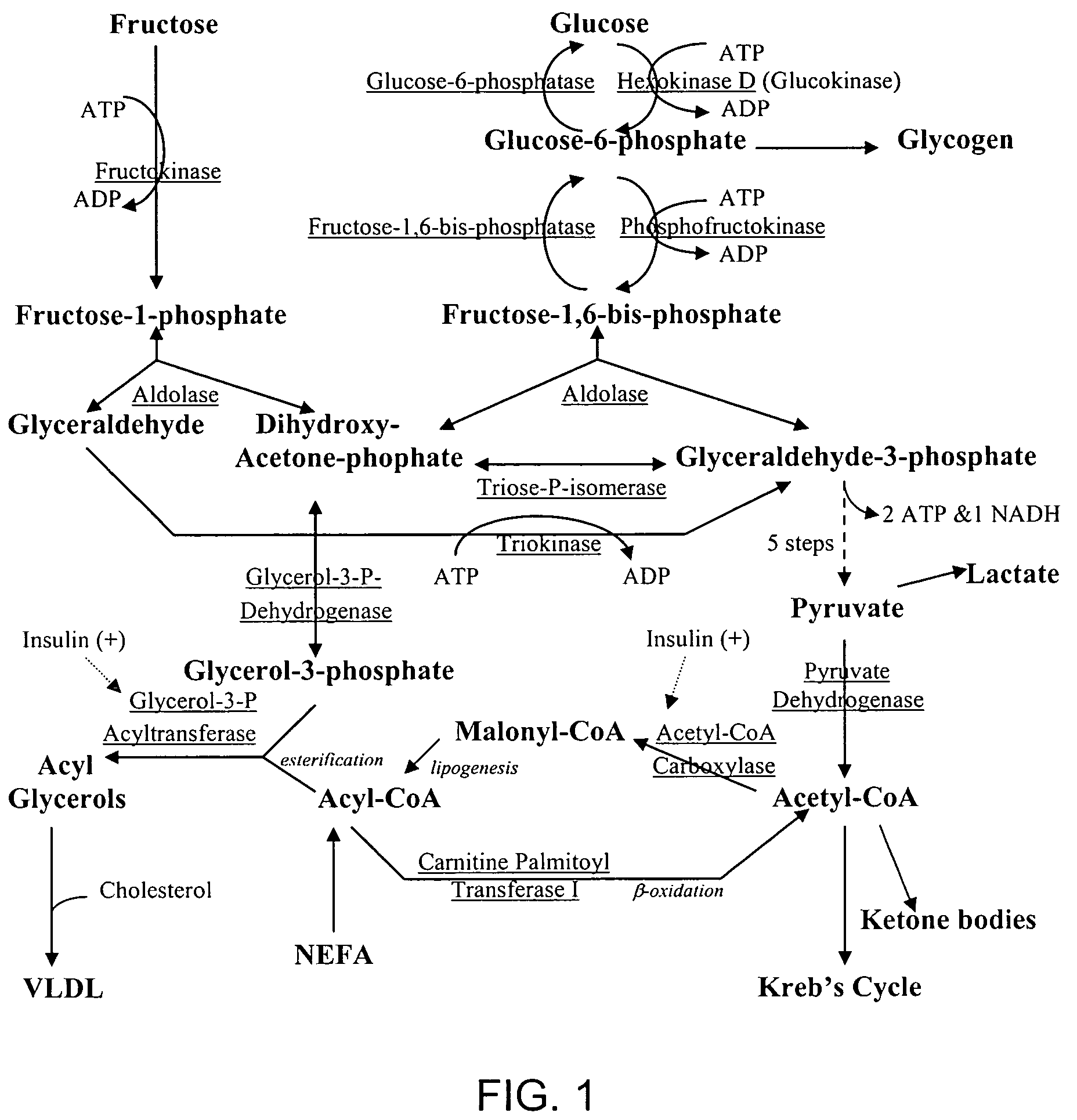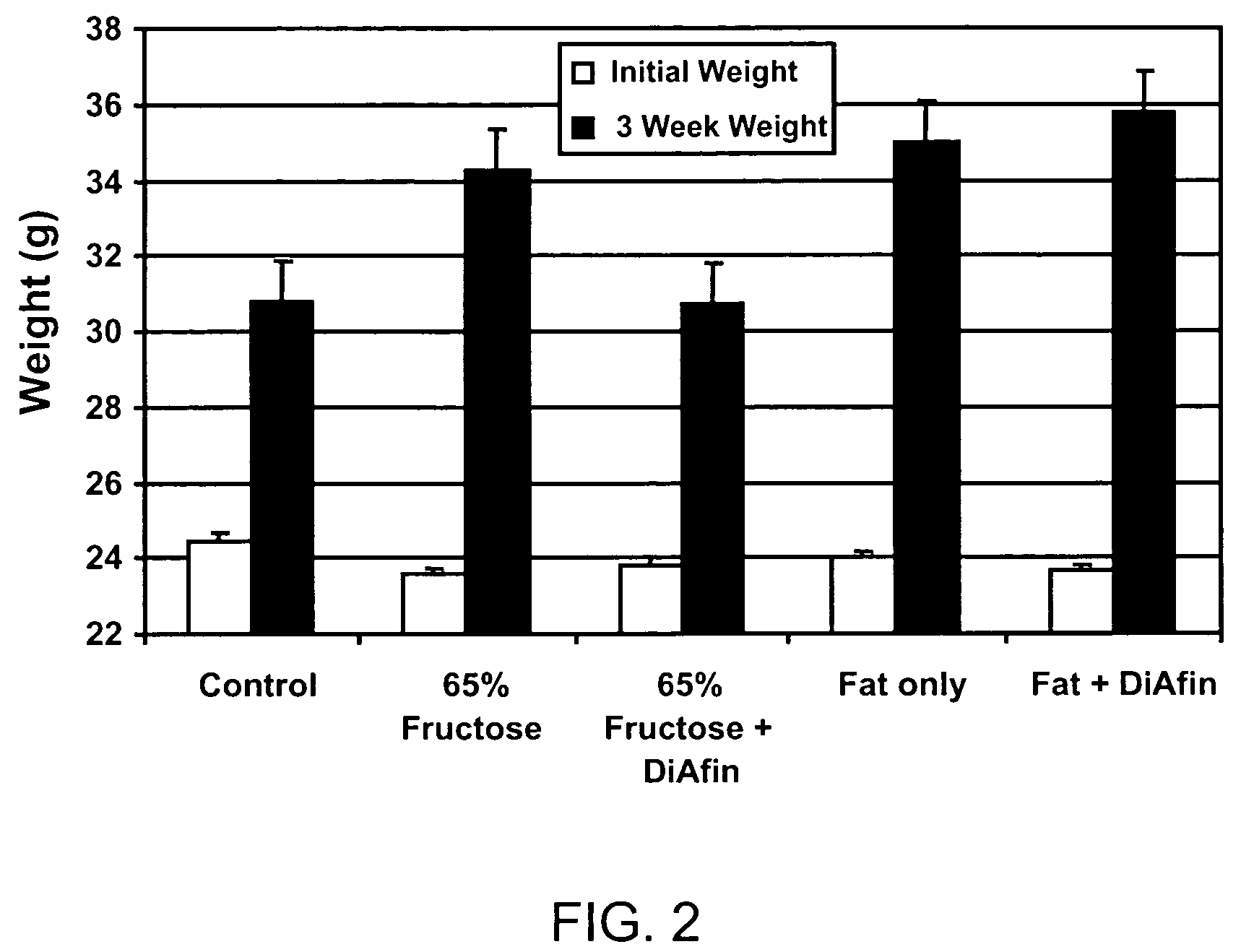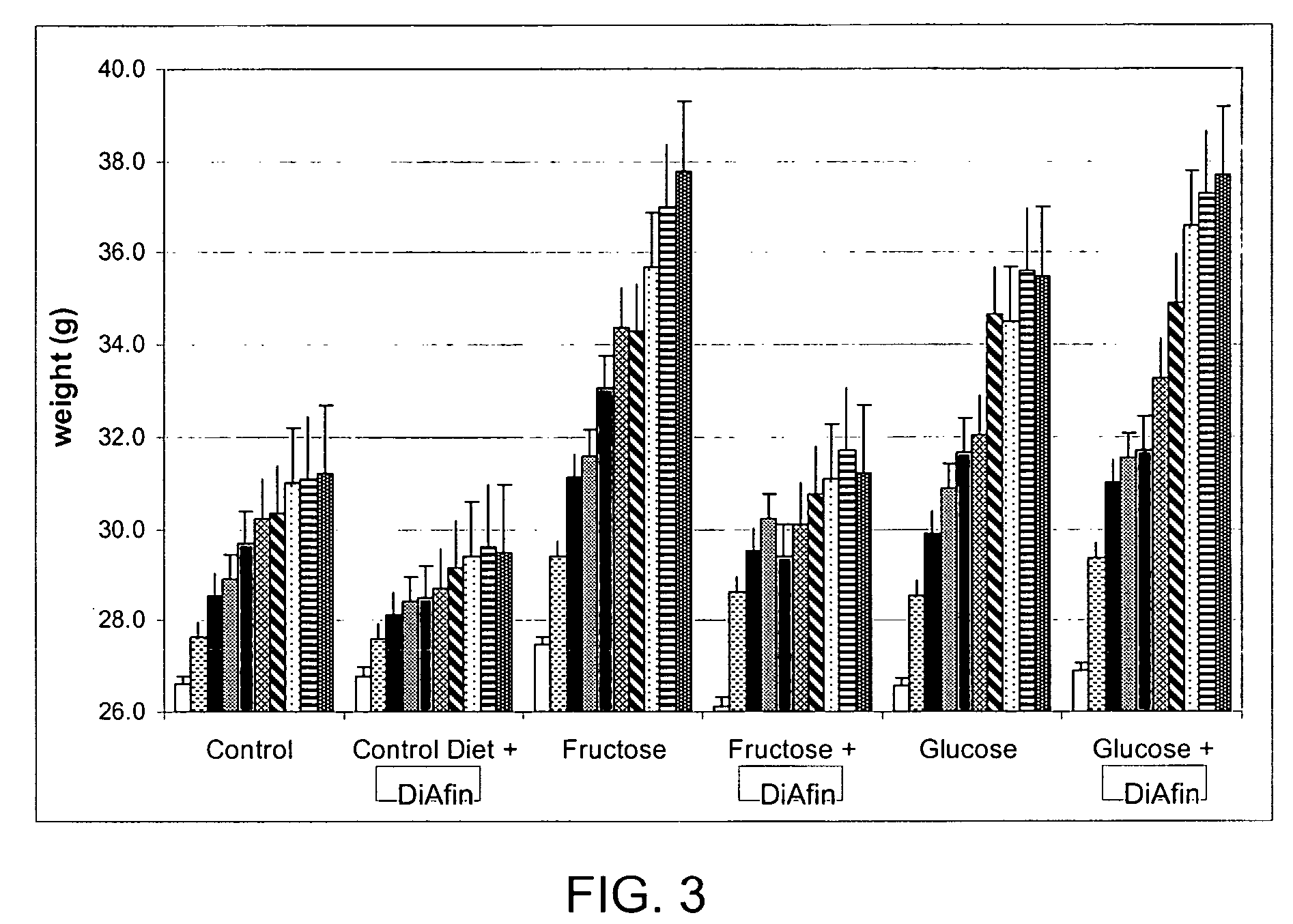Formulation for use in the prevention and treatment of carbohydrate induced diseases and conditions
a technology for carbohydrate induced diseases and conditions, applied in the field of matter, can solve the problems affecting the utilization rate of carbohydrate, and affecting the effect of reducing the use of starch and glucose by many tissues, so as to inhibit the growth of sugar induced weight gain and sugar induced obesity
- Summary
- Abstract
- Description
- Claims
- Application Information
AI Technical Summary
Problems solved by technology
Method used
Image
Examples
example 1
Effect of a Mixture of Free-B-Ring Flavonoids and Flavans on Weight Gain Resulting from a Diet Supplemented with Fructose or Fat for Three Weeks
[0158]To investigate the effect that a composition of matter comprised of a mixture of Free B-Ring flavonoids and flavans has weight gain, a defined plant extract containing Free-B-Ring flavonoids isolated from Scutellaria baicalensis and flavans isolated from Acacia catechu in a ratio of 80:20 (Free-B-Ring flavonoids:flavans) was used. This composition of matter was formulated as described in U.S. application Ser. No. 10 / 427,746, filed Apr. 30, 2003, entitled “Formulation With Dual Cox-2 And 5-Lipoxygenase Inhibitory Activity,” which is incorporated herein by reference in its entirety.
[0159]Six-week-old ICR female mice (ten per test group) (Harlan Laboratories) were gavaged with the extract in water at a therapeutic dose of 100 mg / kg. One group of mice were fed their normal diet and given a 65% solution of fructose as their drinking water, ...
example 2
Effect of a Mixture of Free-B-Ring Flavonoids and Flavans on Weight Gain Resulting from a Diet Supplemented with Fructose and Glucose for Eight Weeks
[0160]This study was performed generally in the same manner as described in Example 1, using six-week old ICR female mice (ten per test group) (Harlan Laboratories) as the test subjects and an 80:20 mixture of Free-B-Ring flavonoids:flavans formulated as described in as described in U.S. application Ser. No. 10 / 427,746, filed Apr. 30, 2003, entitled “Formulation With Dual Cox-2 And 5-Lipoxygenase Inhibitory Activity,” which is incorporated herein by reference in its entirety. The results are set forth in FIG. 3.
[0161]With reference to FIG. 3 the “control” group was fed a balanced diet as recommended by the vendor. A second “control” group was also given the extract at 100 mg / kg by gavage. Two test groups received the control diet plus 65% fructose ad libitum in their water. One of these groups was gavaged daily with 100 mg / kg of extract...
example 3
Effect of a Mixture of Free-B-Ring Flavonoids and Flavans on the Concentration of TNFα
[0162]Peripheral blood monocytes (PBMCs) from human blood donors were isolated using a Histopaque gradient (Sigma). The cells were then cultured in RPMI 1640 supplemented with 1% bovine serum albumin for approximately 12 hours before being treated with lipopolysaccharide (LPS) at 10 mg / mL to induce inflammation in a one hour incubation in the presence of various concentrations of the 80:20, Free-B-Ring flavonoid:flavan extract. The results are set forth in FIG. 4.
PUM
| Property | Measurement | Unit |
|---|---|---|
| weight | aaaaa | aaaaa |
| concentrations | aaaaa | aaaaa |
| concentrations | aaaaa | aaaaa |
Abstract
Description
Claims
Application Information
 Login to View More
Login to View More - R&D
- Intellectual Property
- Life Sciences
- Materials
- Tech Scout
- Unparalleled Data Quality
- Higher Quality Content
- 60% Fewer Hallucinations
Browse by: Latest US Patents, China's latest patents, Technical Efficacy Thesaurus, Application Domain, Technology Topic, Popular Technical Reports.
© 2025 PatSnap. All rights reserved.Legal|Privacy policy|Modern Slavery Act Transparency Statement|Sitemap|About US| Contact US: help@patsnap.com



